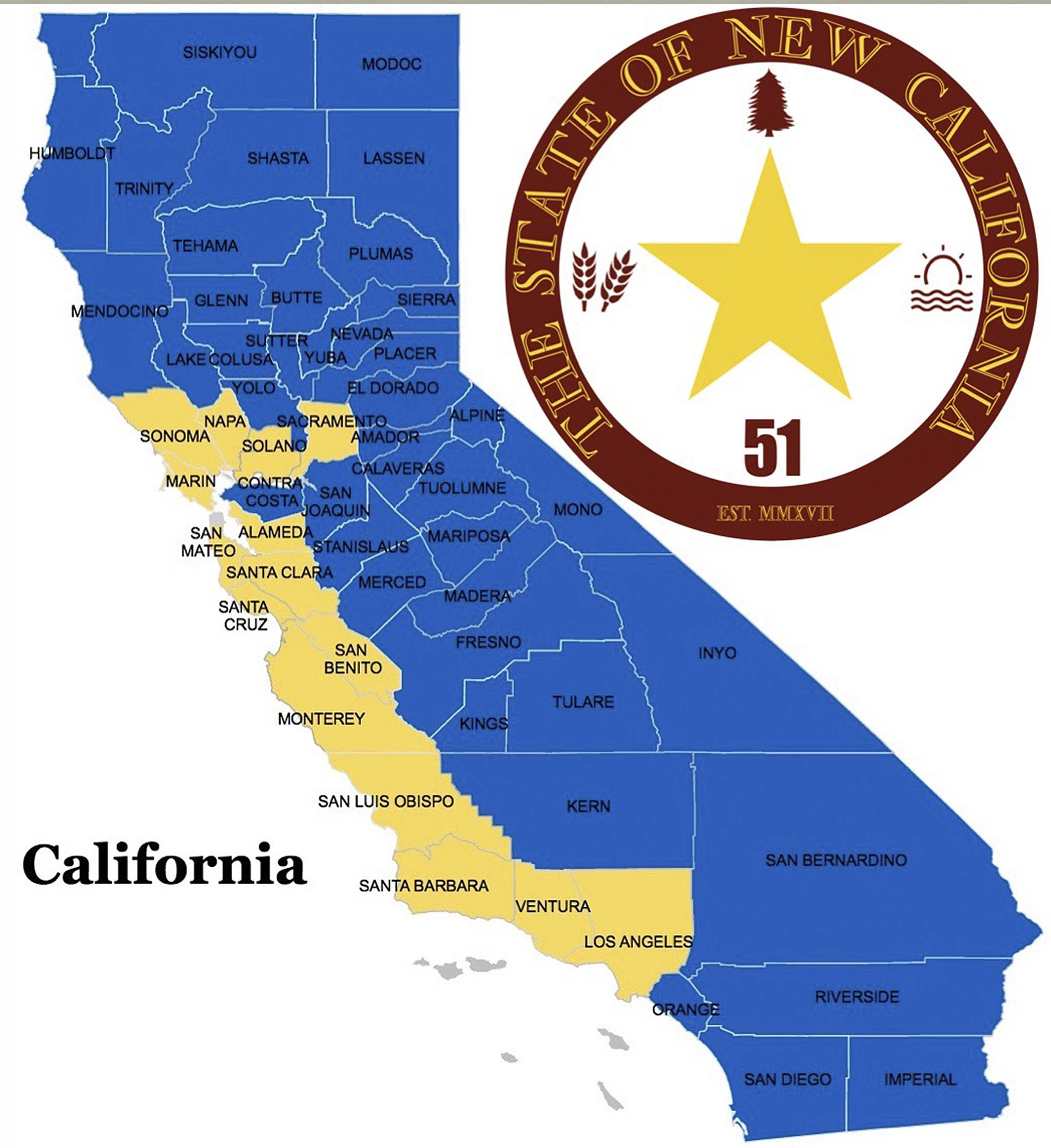By Abby Hamblin
The San Diego Union-Tribune
SAN DIEGO — Here we go again. The “New California” movement — launched to little fanfare in 2016 — made a splash in the news this week thanks to the issuance of a public “declaration of independence” calling for the formation of a 51st state in the U.S. and headlines on CBS, USA Today and the Drudge Report.
It’s one in a long string of efforts for California to secede from the U.S. or be split into multiple states.
“New California is a new state in development by egregiously aggrieved Californians exercising our Constitutional right to form a new state separate from the tyranny and lawlessness of the state of California,” the group’s Facebook Page says.
The new state, as envisioned, would exclude parts of California along the coastline from Orange County north to Napa County; New California would include all other parts of California, including San Diego County, leaving the coastal stretch as California.
The group’s website lists offices in Yuba City, Orange and Fresno, and Las Vegas bookies list its odds as long. (Kidding. Las Vegas oddsmakers aren’t going anywhere near this one.)
The group’s main grievances are listed as “years of over taxation, regulation, and mono party politics,” which it says has made the state of California “ungovernable.”
“The nature of the state becoming ungovernable has caused a decline in essential basic services such as education, law enforcement, fire protection, transportation, housing, health care, taxation, voter rights, banking, state pension systems, prisons, state parks, water resource management, home ownership, infrastructure and many more,” the group’s executive summary says.
The declaration of independence published and shared in Marysville on Monday asks California lawmakers and U.S. congressional leaders to recognize its efforts and create the state of New California.
New California Vice Chair Paul Preston described it as a rural vs. urban split. In an interview Tuesday, Preston said he had received dozens of calls of support in the 24 hours after the declaration.
To pull off this extremely unlikely effort, here’s what the Constitution says would need to happen:
“New States may be admitted by the Congress into this Union; but no new State shall be formed or erected within the jurisdiction of any other state; nor any state be formed by the junction of two or more states, or parts of states, without the consent of the legislatures of the states concerned as well as of the Congress.”
In other words, state lawmakers would have to vote to split up the state, then Congress would have to approve it. So to be blunt about all this: It’s a long shot.
The group is moving forward, however, putting together a list of organized county committees who would then spread the word and raise support locally.
Preston termed it a “growth phase” for the organization.


